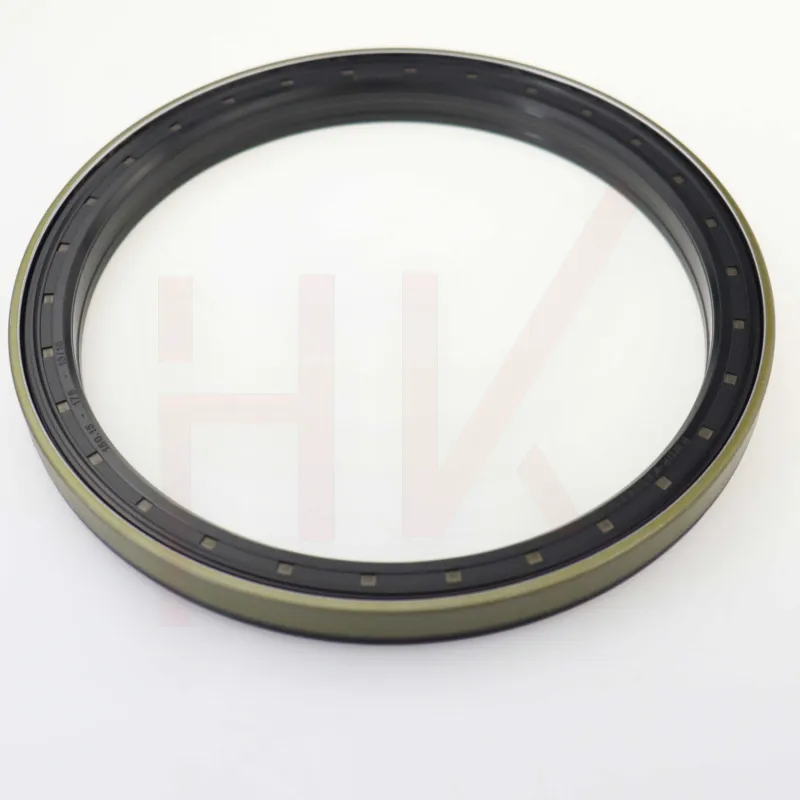gru . 10, 2024 03:47 Back to list
Understanding Rod Wiper Seals and Their Importance in Hydraulic Systems
Understanding Rod Wiper Seals A Comprehensive Overview
Rod wiper seals play a crucial role in various hydraulic and pneumatic systems, serving as an essential component designed to maintain the efficiency and longevity of machinery. These seals are specifically engineered to prevent contaminants from entering piston rods or hydraulic cylinders, which helps ensure smooth operation and reduces wear on vital components.
What Are Rod Wiper Seals?
Rod wiper seals, often simply referred to as wipers, are typically positioned at the outer end of a rod fixture within a hydraulic or pneumatic cylinder. Their primary function is to wipe off any debris, dust, or moisture from the rod's surface as it retracts into the cylinder. By doing so, they help keep the internal environment clean and free from particles that could cause damage or degrade performance over time.
Importance of Rod Wiper Seals
The importance of rod wiper seals cannot be overstated. In hydraulic systems, any ingress of dirt or moisture can lead to severe operational issues, including cylinder wear, fluid contamination, and ultimately, system failure. Rod wiper seals act as the first line of defense against these contaminants.
In addition to maintaining cleanliness, wiper seals also contribute to the efficiency of the operating system. When a hydraulic system is contaminated, it may experience reduced performance levels, including slower response times, decreased power, and increased energy consumption. By effectively keeping contaminants at bay, rod wiper seals help ensure that machinery operates smoothly and efficiently.
Types of Rod Wiper Seals
Rod wiper seals come in various designs and materials, each suited for different applications and environments. The most common types include
rod wiper seal

1. Polyurethane Wipers Renowned for their durability and abrasion resistance, polyurethane wipers are often used in heavy-duty applications. They can withstand harsh environmental conditions and are ideal for systems subjected to high pressures.
2. Nitrile Wipers Nitrile rubber is commonly used due to its excellent resistance to oils and fluids. This makes nitrile wipers suitable for applications where hydraulic fluids or lubricants are present.
3. PTFE Wipers Polytetrafluoroethylene (PTFE) wipers, known for their low friction properties, are often used in high-speed applications. They provide excellent chemical resistance and can operate effectively at varied temperatures.
Installation and Maintenance
Proper installation of rod wiper seals is critical for ensuring their effectiveness. When correctly installed, these seals provide optimal performance and longevity. It is essential to follow manufacturer guidelines during installation and utilize the appropriate tools and techniques.
Regular maintenance is also vital to extending the life of rod wiper seals. Inspecting seals for wear and cleanliness, and replacing them when necessary, can prevent larger issues down the line. It is beneficial to develop a maintenance schedule that includes checking for any signs of fluid leakage or damage to the seals, ensuring that the machinery remains in top condition.
Conclusion
In conclusion, rod wiper seals are a fundamental yet often overlooked component of hydraulic and pneumatic systems. Their ability to prevent contamination from entering critical machinery elements ensures that systems operate efficiently and reliably. With various materials and designs available, it is essential to select the right type of wiper seal for specific applications. Proper installation and maintenance can further enhance the performance and lifespan of these seals, contributing to the overall effectiveness of machinery in demanding environments. As industries continue to grow and evolve, the significance of rod wiper seals in maintaining operational integrity will only increase.
-
Unlocking the Potential of Hydraulic Systems with Essential Sealing Solutions
NewsAug.06,2025
-
Unleash the Power of Your Hydraulic Systems with Our Premium Seal Kits
NewsAug.06,2025
-
Specialized Hydraulic Seal Kits for Breakers, Pistons, and Presses
NewsAug.06,2025
-
Revitalize Hydraulic Systems with Premium Repair and Seal Kits
NewsAug.06,2025
-
Fortify Your Cylinders with Premium Sealing Solutions
NewsAug.06,2025
-
Elevate Hydraulic System Reliability with Specialized Seal Kits
NewsAug.06,2025
-
TCN Oil Seal Metal Ring Reinforcement for Heavy Machinery
NewsJul.25,2025
Products categories
















